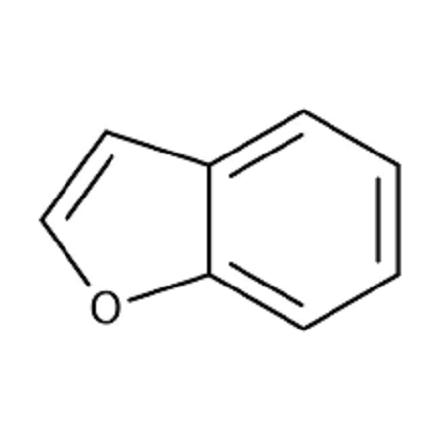Applications and Reactivity of Benzo[b]furan
Benzo[b]furan is used in the manufacture of coumarone-indene resin. It has been used to make floor tiles and other products.

Applications
Benzo[b]furan scaffolds display a broad range of pharmacological properties such as antihyperglycemic, antitumor, antiinflammatory, antifungal, antiviral, antimalarial, and antipyretic activities, including enzyme inhibitors. Numerous chemical compounds with benzofuran skeletons are widely distributed in nature with a broad spectrum of biological activities, and the most recognized are angelicin, amiodarone, bergapten, usenic acid, and xanthotoxin. Based on lead obtained from the biological activity of natural products, several synthetic compounds are designed and synthesized to assess their pharmacological efficacy, and as a result numerous compounds are in clinical use as drugs for the treatment of various ailments.
A list of benzo[b]furan-based drugs in clinical use was mentioned earlier. Benzo[b]furans have luminescent and electroluminescent properties and several compounds of this class are used as dopants in electroluminescent devices. Benzo[b]furan derivatives are used in cosmetics due to their antioxidant and cytoprotective properties. Some of these compounds are also used in the depigmentation of skin.
Chemical Reactivity
Although benzo[b]furan is more stable compared to furan, in the presence of concentrated acids it undergoes polymerization. The benzo[b]furan ring is prone to electrophilic substitution reactions but selectivity of substitution is poor. Since the electron population at C2 is 0.54, while at C3 it is 0.47, the difference in electron population is only 0.07. The preferential position for electrophilic substitution is C2 and the next position is C3 . Thus electrophilic substitution of benzo[b]furan gives C2 - and C3 -substituted products. When position C2 is occupied, the substitution reaction takes place at C3 . However, when the C2 - and C3 -positions are occupied the preferential position of substitution is in the benzene ring at the C5 site.
Nitration
Benzo[b]furan smoothly undergoes nitration with different nitrating agents such as a mixture of nitric acid and acetic anhydride or a mild nitrating agent, ceric ammonium nitrate in acetic anhydride, which gave only 2-nitrobenzo[b]furan. However, using nitrogen dioxide as a nitrating agent in benzene at 10°C, a mixture of 2-nitro and 3-nitrobenzene[b]furans was isolated.
![271-89-6 Benzo[b]furanApplicationsChemical Reactivity](https://www.chemicalbook.com/CAS/GIF/271-89-6.gif)
